-
 Bitcoin
Bitcoin $115000
0.12% -
 Ethereum
Ethereum $3701
4.50% -
 XRP
XRP $3.081
2.99% -
 Tether USDt
Tether USDt $0.0000
-0.01% -
 BNB
BNB $767.9
1.45% -
 Solana
Solana $169.5
3.13% -
 USDC
USDC $0.9999
0.01% -
 Dogecoin
Dogecoin $0.2106
4.30% -
 TRON
TRON $0.3334
1.62% -
 Cardano
Cardano $0.7564
2.54% -
 Stellar
Stellar $0.4165
0.76% -
 Hyperliquid
Hyperliquid $38.75
0.25% -
 Sui
Sui $3.593
3.00% -
 Chainlink
Chainlink $17.08
3.59% -
 Bitcoin Cash
Bitcoin Cash $573.6
4.35% -
 Hedera
Hedera $0.2508
-0.84% -
 Avalanche
Avalanche $23.07
6.46% -
 Ethena USDe
Ethena USDe $1.001
-0.02% -
 Litecoin
Litecoin $120.8
8.17% -
 UNUS SED LEO
UNUS SED LEO $8.943
-0.32% -
 Toncoin
Toncoin $3.400
-5.60% -
 Shiba Inu
Shiba Inu $0.00001255
1.54% -
 Uniswap
Uniswap $9.908
6.32% -
 Polkadot
Polkadot $3.718
2.10% -
 Monero
Monero $303.0
-0.74% -
 Dai
Dai $0.9999
-0.02% -
 Bitget Token
Bitget Token $4.392
0.91% -
 Cronos
Cronos $0.1403
6.31% -
 Pepe
Pepe $0.00001076
1.13% -
 Aave
Aave $267.2
1.80%
How does NFT Minting create new NFTs?
NFT minting creates unique digital assets on a blockchain, involving uploading artwork, adding metadata, and generating a unique token ID. Costs vary by blockchain and platform, impacting the process's speed and environmental effects; careful planning is essential.
Mar 01, 2025 at 09:13 am
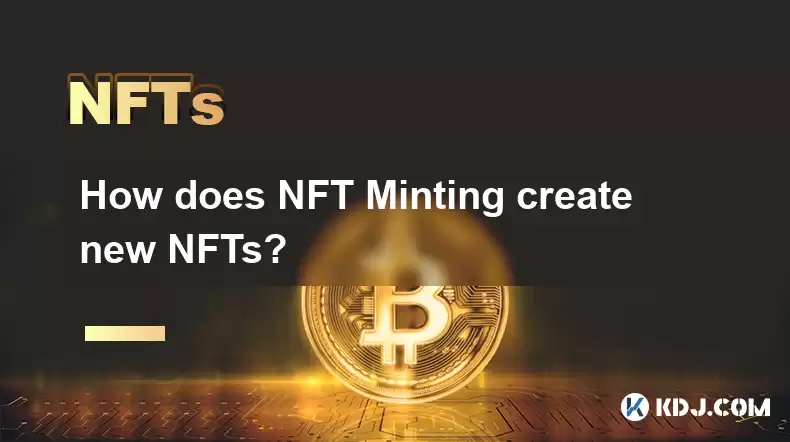
Key Points:
- NFT minting is the process of creating a unique, verifiable digital asset on a blockchain.
- Different blockchains have varying minting processes and associated costs (gas fees).
- Minting involves uploading digital artwork or other data, associating it with metadata, and creating a unique token ID.
- The process varies depending on the chosen platform and the level of customization required.
- Understanding the costs, environmental impact, and platform specifics is crucial before minting.
How Does NFT Minting Create New NFTs?
NFT minting is the process of generating a new, unique Non-Fungible Token (NFT) on a blockchain. This process transforms digital content—like artwork, music, videos, or even tweets—into a verifiable, ownable asset. Think of it as registering a digital certificate of authenticity on a public ledger. The creation process is not instantaneous; it requires several steps and interaction with the chosen blockchain network.
The first step involves selecting a blockchain platform. Popular choices include Ethereum, Solana, Polygon, and Tezos. Each platform has its own characteristics, including transaction fees (gas fees), minting speed, and the overall community around it. Ethereum, despite higher fees, remains a popular choice due to its established ecosystem and widespread recognition.
Once a platform is chosen, you'll need to acquire the necessary cryptocurrency. This is used to pay for the transaction fees (gas) required to mint the NFT on the blockchain. The gas fee fluctuates depending on network congestion, so timing your mint strategically can save you money.
Next, you'll need to prepare your digital asset. This often involves converting your artwork into the correct file format, such as JPEG, PNG, GIF, or video files. The file size is also a consideration, as larger files generally increase minting costs. High-resolution images are generally preferred for better visual quality.
Now comes the minting process itself. This typically involves using a minting platform or marketplace, often integrated with a digital wallet. These platforms provide user-friendly interfaces to guide you through the steps. The platform will then handle the interaction with the chosen blockchain.
- Uploading the asset: You'll upload your prepared digital file to the platform.
- Adding metadata: Crucially, you'll add metadata, which is information describing your NFT. This includes the title, description, artist name, and any other relevant details. This metadata is crucial as it provides context and value to your NFT.
- Creating a unique token ID: The platform generates a unique token ID, which serves as the NFT's digital fingerprint. This ensures that your NFT is uniquely identifiable on the blockchain.
- Paying gas fees: You'll pay the gas fee using your chosen cryptocurrency to finalize the minting process. The transaction is then broadcast to the blockchain network, where it's verified and added to a block.
Once the transaction is confirmed, your NFT is officially minted and exists on the blockchain. You'll typically receive a token ID and a link to your NFT on the chosen marketplace or platform. This allows you to prove ownership and track its history. Different platforms offer varying levels of customization and additional features during this process.
The process of minting NFTs on different blockchains varies slightly. For instance, Ethereum's minting process often involves interacting with smart contracts, while other blockchains may offer simpler interfaces. The specific steps might also differ depending on whether you're using a dedicated minting platform or a marketplace that facilitates the process.
Choosing the right platform is a crucial decision, and factors like cost, speed, and the platform's features should be carefully considered. Some platforms offer specialized features like royalties for creators, ensuring ongoing revenue from secondary sales of their NFTs.
The entire minting process can range from a few minutes to several hours, depending on network congestion and the complexity of the NFT. It's important to understand that the gas fees are directly linked to the network's activity; peak times will result in higher fees. Also note that minting itself doesn't guarantee instant sales or value; the value of an NFT is determined by market demand and perception.
Frequently Asked Questions:
Q: What are the costs involved in NFT minting?
A: The costs primarily involve gas fees, which are transaction fees paid to the blockchain network for processing the minting transaction. These fees vary widely based on the blockchain used, network congestion, and the complexity of the NFT. There may also be platform fees charged by the minting service provider.
Q: What is the environmental impact of NFT minting?
A: The environmental impact is largely linked to the energy consumption of the blockchain network. Proof-of-work blockchains like Ethereum (before the merge) were criticized for their high energy consumption. However, many blockchains now utilize more energy-efficient consensus mechanisms, like Proof-of-Stake, significantly reducing their environmental footprint.
Q: Can I mint my NFT on any blockchain?
A: No, each NFT is tied to a specific blockchain. You'll need to choose a blockchain and then use a platform or marketplace compatible with that blockchain. The choice depends on factors such as cost, speed, and the community surrounding the blockchain.
Q: What happens after I mint my NFT?
A: After successful minting, you'll receive a unique token ID, which proves your ownership. You can then list your NFT on a marketplace for sale, or keep it in your digital wallet. The NFT’s history and ownership are recorded on the blockchain, ensuring its provenance.
Q: Do I need any special software to mint an NFT?
A: While some technical knowledge is helpful, you don't necessarily need to be a programmer. Most minting platforms provide user-friendly interfaces that guide you through the process. However, you'll need a digital wallet to store your cryptocurrency and your minted NFT.
Disclaimer:info@kdj.com
The information provided is not trading advice. kdj.com does not assume any responsibility for any investments made based on the information provided in this article. Cryptocurrencies are highly volatile and it is highly recommended that you invest with caution after thorough research!
If you believe that the content used on this website infringes your copyright, please contact us immediately (info@kdj.com) and we will delete it promptly.
- Solana Memecoin Launchpads: A Wild Ride with LetsBONK.fun Leading the Charge
- 2025-08-05 17:30:12
- Crypto Volatility & Token Unlocks: Navigating the Storm
- 2025-08-05 16:30:13
- SUI Traders Eye Discount: Is Now the Time to Buy?
- 2025-08-05 16:30:13
- Bitcoin Price in August: Will the BTC Rally Continue?
- 2025-08-05 17:35:12
- Decentralized Perpetuals Soar: Volume Hits All-Time High, Leaving CEXs in the Dust?
- 2025-08-05 16:50:12
- Decoding MYCUSD: Crypto Forecasting for Digital Asset Success
- 2025-08-05 16:50:12
Related knowledge
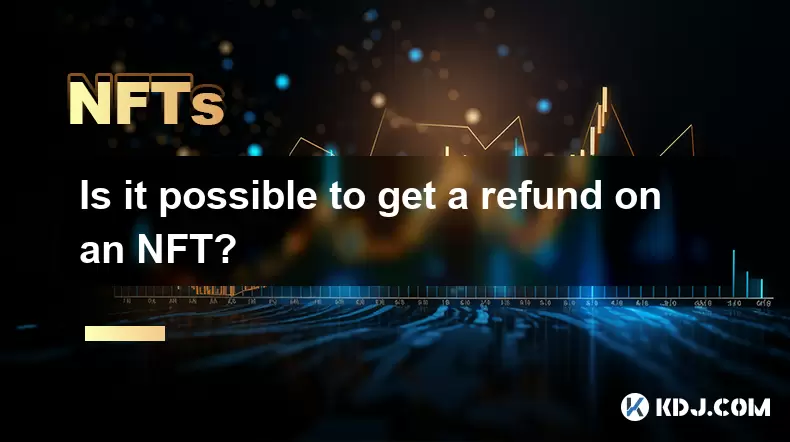
Is it possible to get a refund on an NFT?
Jul 21,2025 at 08:35pm
Understanding NFT Transactions and RefundsWhen you purchase an NFT (Non-Fungible Token), the transaction is typically recorded on a blockchain, making...
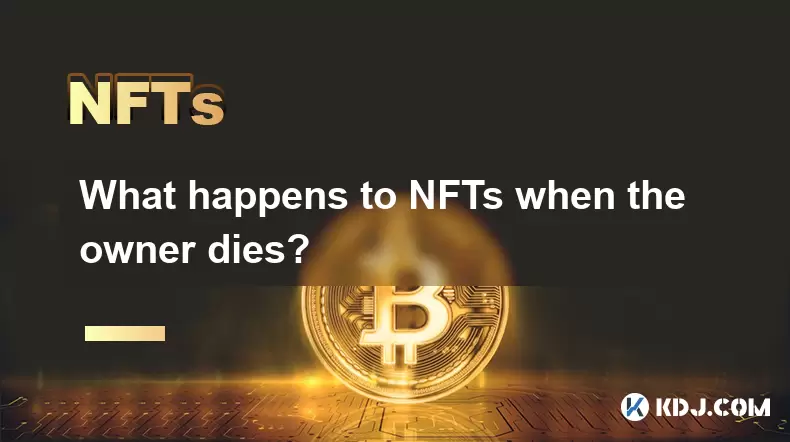
What happens to NFTs when the owner dies?
Jul 22,2025 at 02:43pm
Legal Ownership and Digital AssetsWhen an individual owns NFTs, the question of what happens to these assets upon their death is a pressing one. NFTs ...
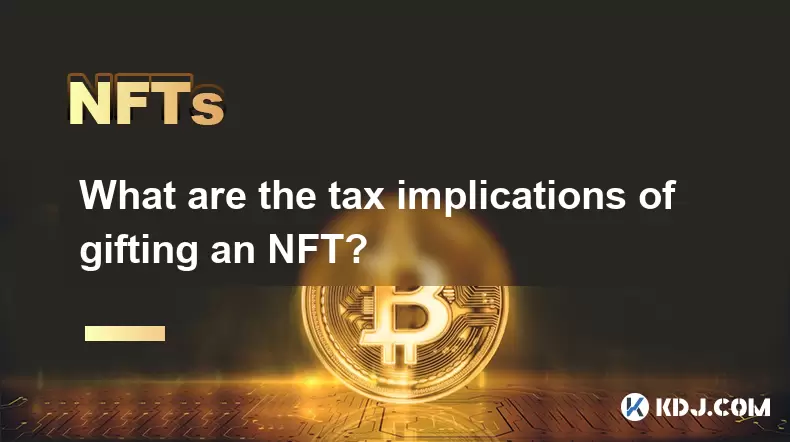
What are the tax implications of gifting an NFT?
Jul 19,2025 at 04:21am
Understanding the Basics of NFT GiftingGifting a Non-Fungible Token (NFT) involves transferring ownership from one individual to another without recei...
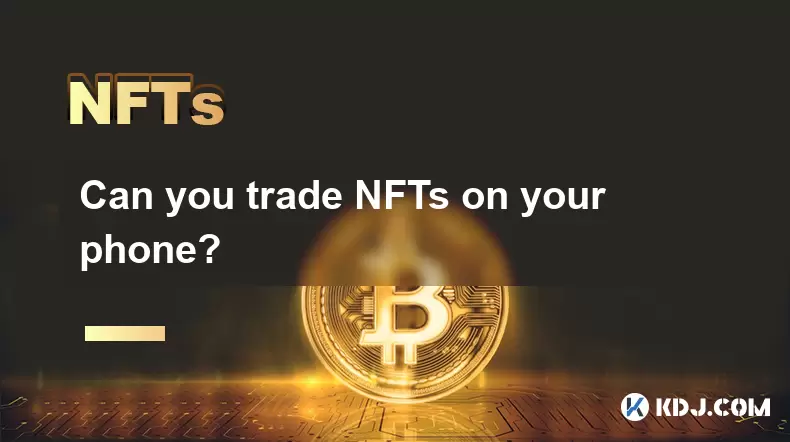
Can you trade NFTs on your phone?
Jul 18,2025 at 04:29am
Trading NFTs on Mobile DevicesYes, you can trade NFTs on your phone, and the process has become increasingly streamlined thanks to a variety of mobile...
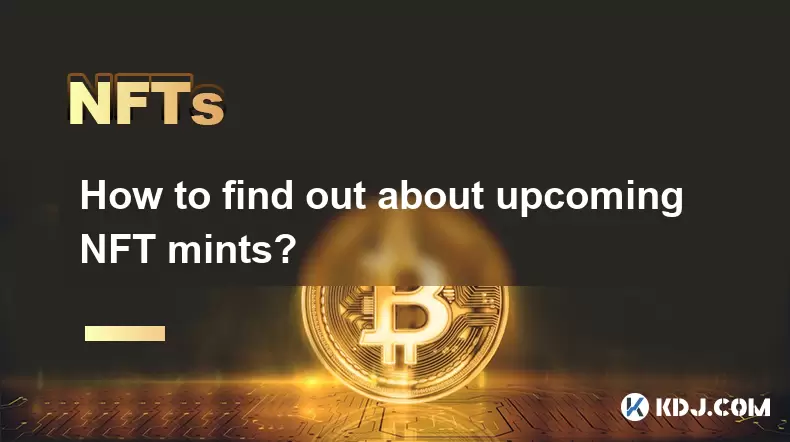
How to find out about upcoming NFT mints?
Jul 18,2025 at 11:50am
Exploring NFT Minting OpportunitiesUnderstanding the landscape of upcoming NFT mints is crucial for collectors, investors, and creators who wish to st...
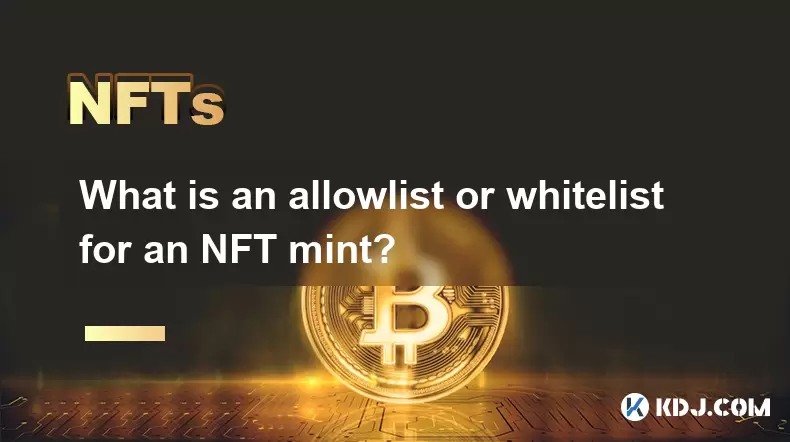
What is an allowlist or whitelist for an NFT mint?
Jul 20,2025 at 07:14pm
Understanding the Concept of an Allowlist for NFT MintingAn allowlist, also commonly referred to as a whitelist, is a mechanism used in the NFT mintin...

Is it possible to get a refund on an NFT?
Jul 21,2025 at 08:35pm
Understanding NFT Transactions and RefundsWhen you purchase an NFT (Non-Fungible Token), the transaction is typically recorded on a blockchain, making...

What happens to NFTs when the owner dies?
Jul 22,2025 at 02:43pm
Legal Ownership and Digital AssetsWhen an individual owns NFTs, the question of what happens to these assets upon their death is a pressing one. NFTs ...

What are the tax implications of gifting an NFT?
Jul 19,2025 at 04:21am
Understanding the Basics of NFT GiftingGifting a Non-Fungible Token (NFT) involves transferring ownership from one individual to another without recei...

Can you trade NFTs on your phone?
Jul 18,2025 at 04:29am
Trading NFTs on Mobile DevicesYes, you can trade NFTs on your phone, and the process has become increasingly streamlined thanks to a variety of mobile...

How to find out about upcoming NFT mints?
Jul 18,2025 at 11:50am
Exploring NFT Minting OpportunitiesUnderstanding the landscape of upcoming NFT mints is crucial for collectors, investors, and creators who wish to st...

What is an allowlist or whitelist for an NFT mint?
Jul 20,2025 at 07:14pm
Understanding the Concept of an Allowlist for NFT MintingAn allowlist, also commonly referred to as a whitelist, is a mechanism used in the NFT mintin...
See all articles

























































































